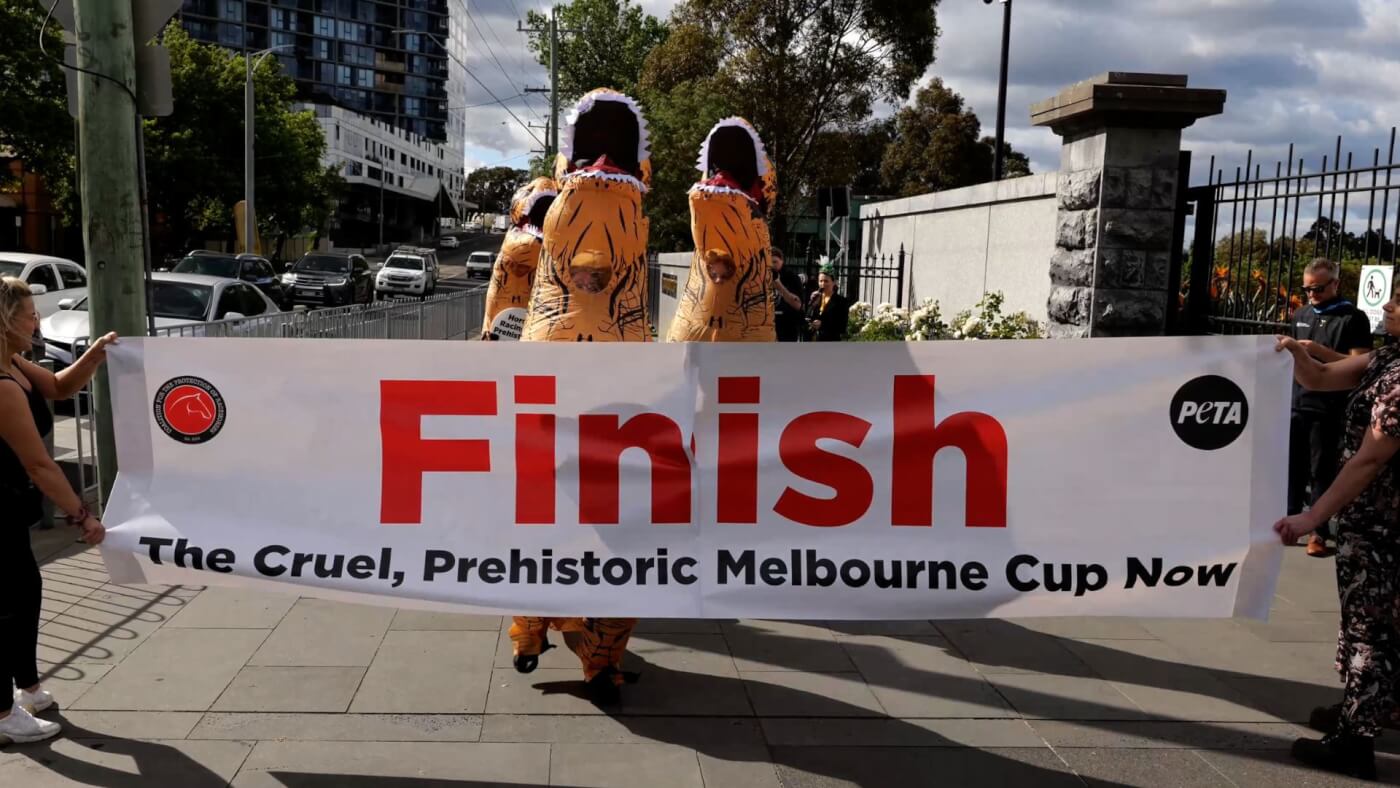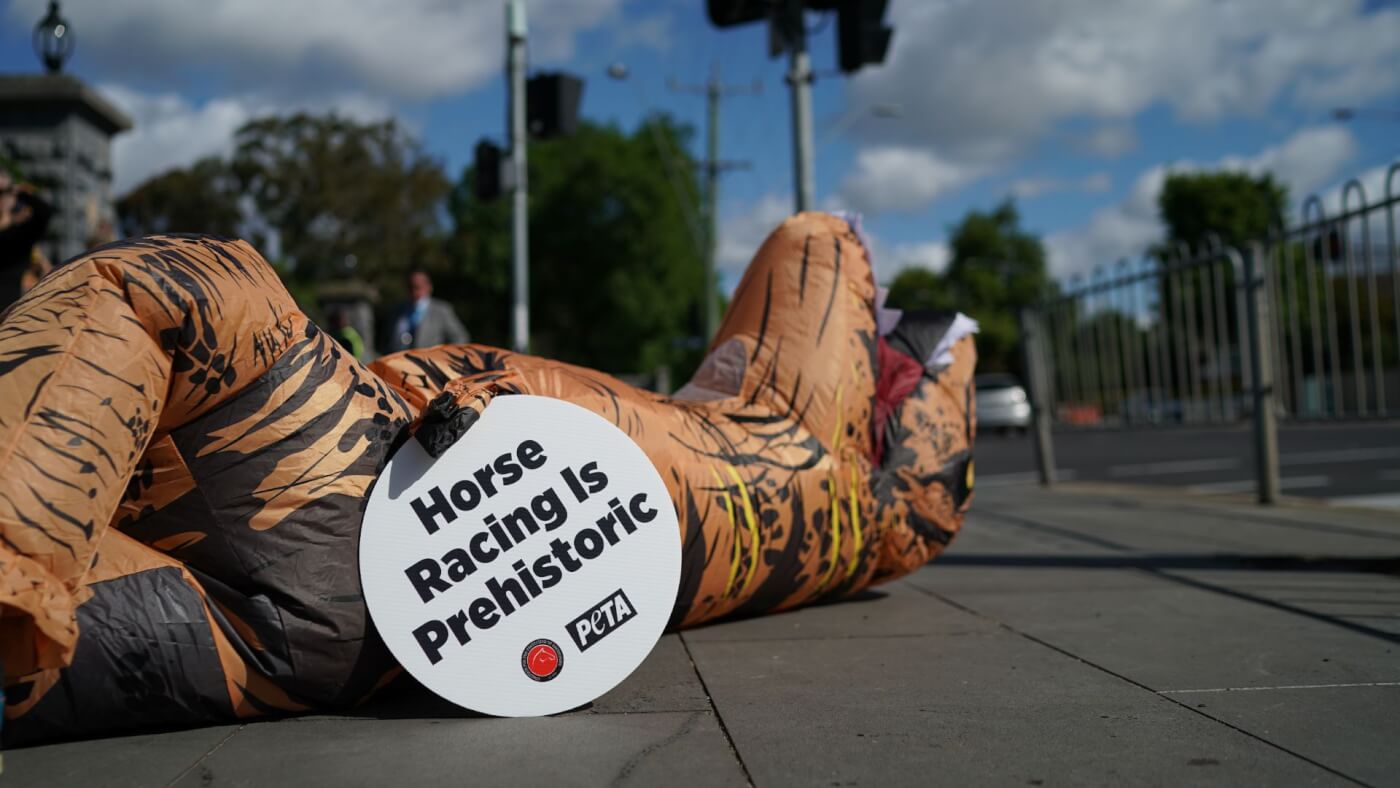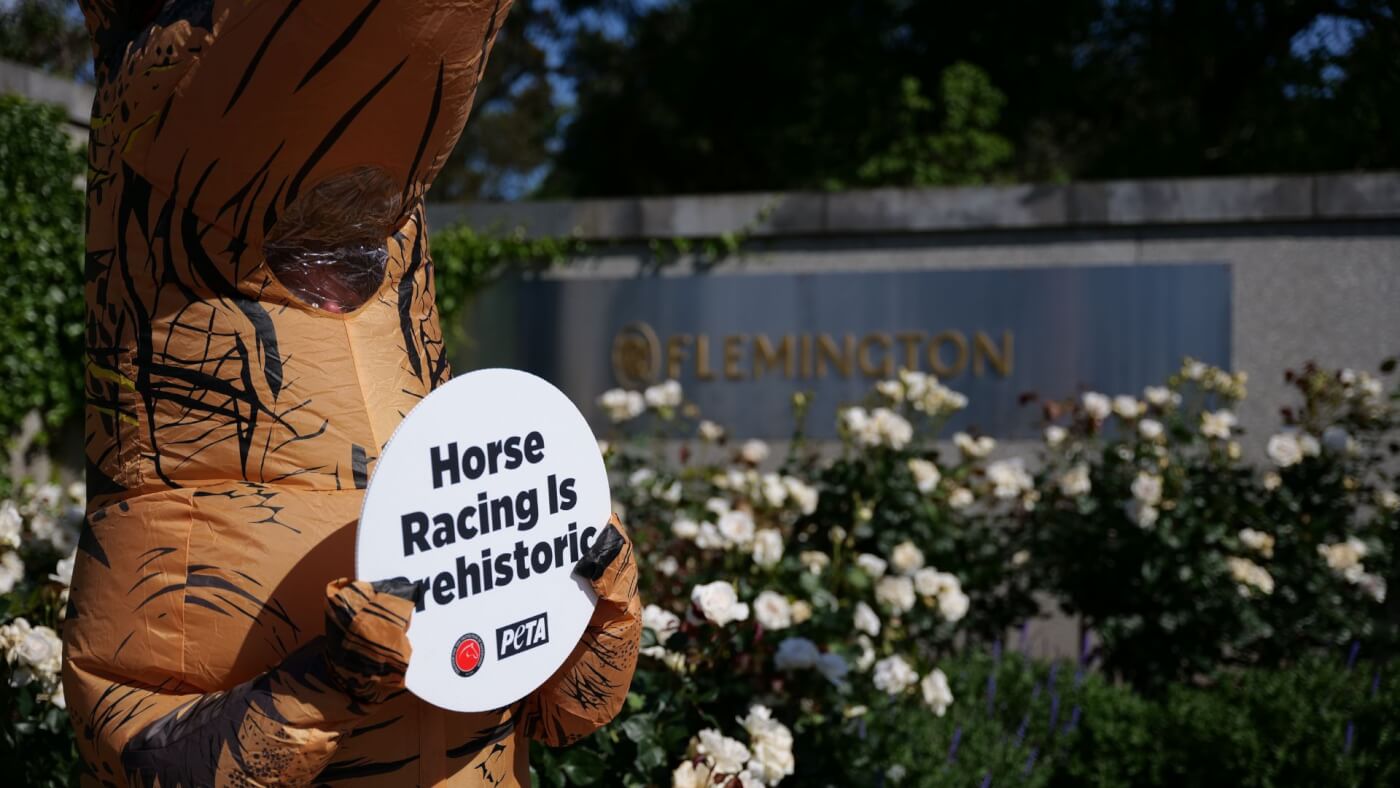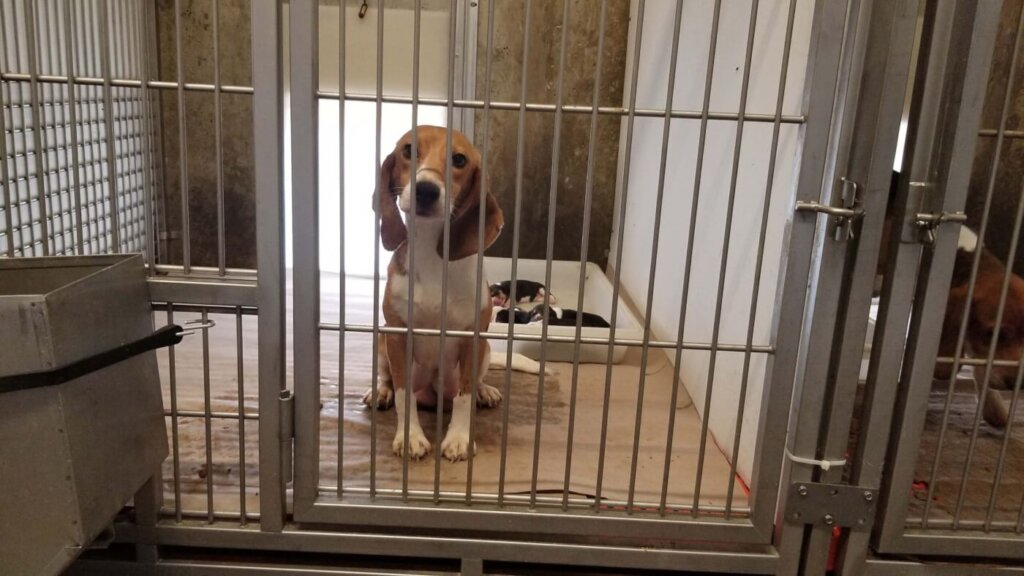
‘Dinosaur’ Dash at Flemington Protests Melbourne Cup
On the eve of the Melbourne Cup, “dinosaurs” took to the streets of Flemington with a message for the horse racing industry: “Horse Racing Is Prehistoric!”
Activists wore inflatable Tyrannosaurus rex costumes and ran – often stumbling – towards a giant breakaway banner finish line. The entertaining event was fun, but the message was serious: cruel and archaic horse racing should be relegated to the history books.

Humans Bet – Horses Die
Over the past nine years, eight horses have died on Melbourne Cup Day alone. In 2020, a horse named Anthony Van Dyck was euthanised after fracturing his fetlock during a race. In 2018, 5-year-old Irish Thoroughbred The Cliffsofmoher fell, breaking his shoulder. He was euthanised shortly thereafter. Other horses who died include Rose of Peace in 2012, Verema in 2013, Admire Rakti and Araldo in 2014, Red Cadeaux in 2015, and Regal Monarch in 2017, after falling in race four.
In the past year, 139 horses have died on Australian racetracks – that’s one every two and a half days – according to numbers collated by the Coalition for the Protection of Racehorses. Their deaths were traumatic and frightening, stomach-churning messes of tangled legs, fractured bones, and broken spines.
However, these recorded track deaths are only the tip of the iceberg. Most states don’t even report deaths that occur during training or in trials, and stewards aren’t required to list the deaths of horses caused by on-track injuries if an animal is removed from the track on race day and killed later.

Horses used for racing have been specifically bred for speed at the expense of their health. They weigh more than 500 kilograms, are supported by ankles only the size of a human’s, and are whipped and forced to run around tracks at speeds of more than 50 kilometres an hour while carrying a jockey on their back. It’s a recipe for disaster.
Many horses are over-medicated to keep them racing when they should be recuperating from injuries, making them more vulnerable to breakdowns.
What Happens When Horses ‘Retire’
Even horses who survive the gruelling ordeal of racing aren’t guaranteed peace. Regardless of pedigree or past earnings, many horses bred for racing are discarded once they’re no longer useful.
A 2020 investigation by Farm Transparency Project followed the fate of ex-racing Thoroughbred and Standardbred horses to two Sydney knackeries, where hidden cameras captured their slaughter and sale as food for companion animals. Many of the horses seen there were officially listed as “retired” on the Racing Australia website. And in 2019, ABC’s 7.30 programme revealed that around 300 horses used for racing went through a single abattoir in Queensland in just 22 days.
Horses bred by the Australian racing industry are also sometimes sold to the racing industry in South Korea, where they’re slaughtered for meat when they’re no longer considered useful. A PETA exposé of that country’s largest horse abattoir shows castoffs from the racing industry being beaten repeatedly in the face as they’re forced into the abattoir and killed for their flesh.

Help Horses Now
The Melbourne Cup – and all other events in which horses are whipped past their limits and their lives are placed at risk merely for entertainment – should end.
The “dinosaur” dash and all the other “Nup to the Cup” events, which are growing in popularity across the country, testify to the groundswell of people who are standing up against horse racing. No one needs to be harmed for human entertainment.
Sponsors foot the bill for much of the Melbourne Cup, paying for advertising and expensive marquees at the track. Despite hearing from PETA about the cruelty of horse racing, Lexus, Penfolds, and Kennedy Luxury Group continue to be major sponsors. Join us in asking these companies to sever ties with the Melbourne Cup now:
Animals Are Suffering in Laboratories – Help Save Them Now


